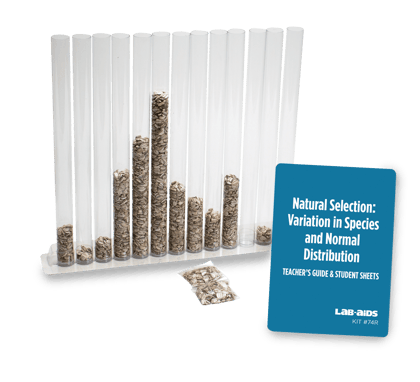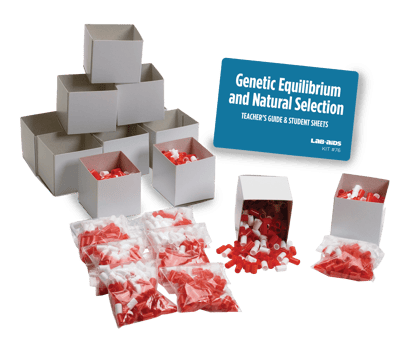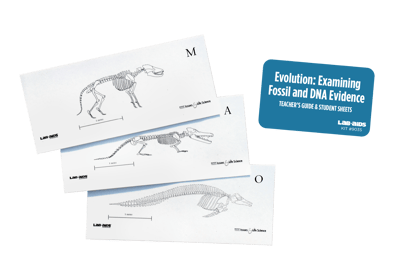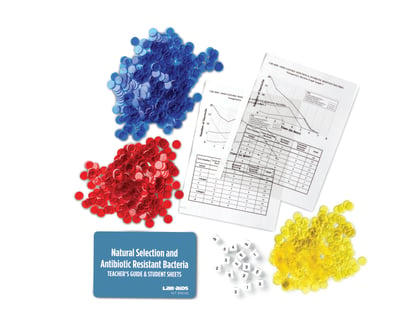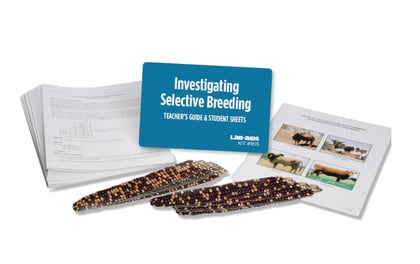Natural Selection Experiment

In the 1950s, Oxford University scientist Dr. Bernard Kettlewell studied the changes in England's peppered moth population. Over a hundred year time period, the population of peppered moth shifted from being primarily light-colored moths to dark-colored moths. Dr. Kettlewell reasoned that predatory birds fed on more light-colored moths because they were more easy to spot against the pollution-darkened tree bark. This meant that the dark-colored moths survived in greater numbers, and the genes for their dark coloring were passed down to future generations. Using Dr. Kettlewell's study as the basis for experimentation, students conduct two simple quantitative lab activities that demonstrate the effects of environmental pollution on nature.
Details at a Glance
- 1 Day | 1 ~50 minute class period
- 1 Activity
- Accommodates unlimited classes, each with 6 groups of 5 students
- All materials are non-consumable
- Includes digital resources
Scientific Concepts
• Replicate the "peppered moth" study in the lab
• Simulate predator-prey relationship
• Illustrate Darwin’s Theory of Natural Selection and industrial melonism
• Collect data and draw conclusion concerning natural selection and environmental pollution
Guides & Student Sheets
Our kits and modules provide you with everything you need so you can open, review, and teach the material confidently the next day.
- Comprehensive Teacher Guide with background information, detailed instruction, example data and answers
- Student Sheets with age appropriate background information, full procedure(s), and analysis items
- Materials necessary for the investigation (beyond common classroom items)
- Safety Data Sheets
Kit Components
- 4 Environmental Trays, black
- 4 Environmental Trays, green
- 4 Set of "month" of varying colors and the same size
- 4 Set of "month" of varying size and the same color
- 8 Bag, resealable, 4" x 6"
- Downloadable pdfs of student and teacher literature

